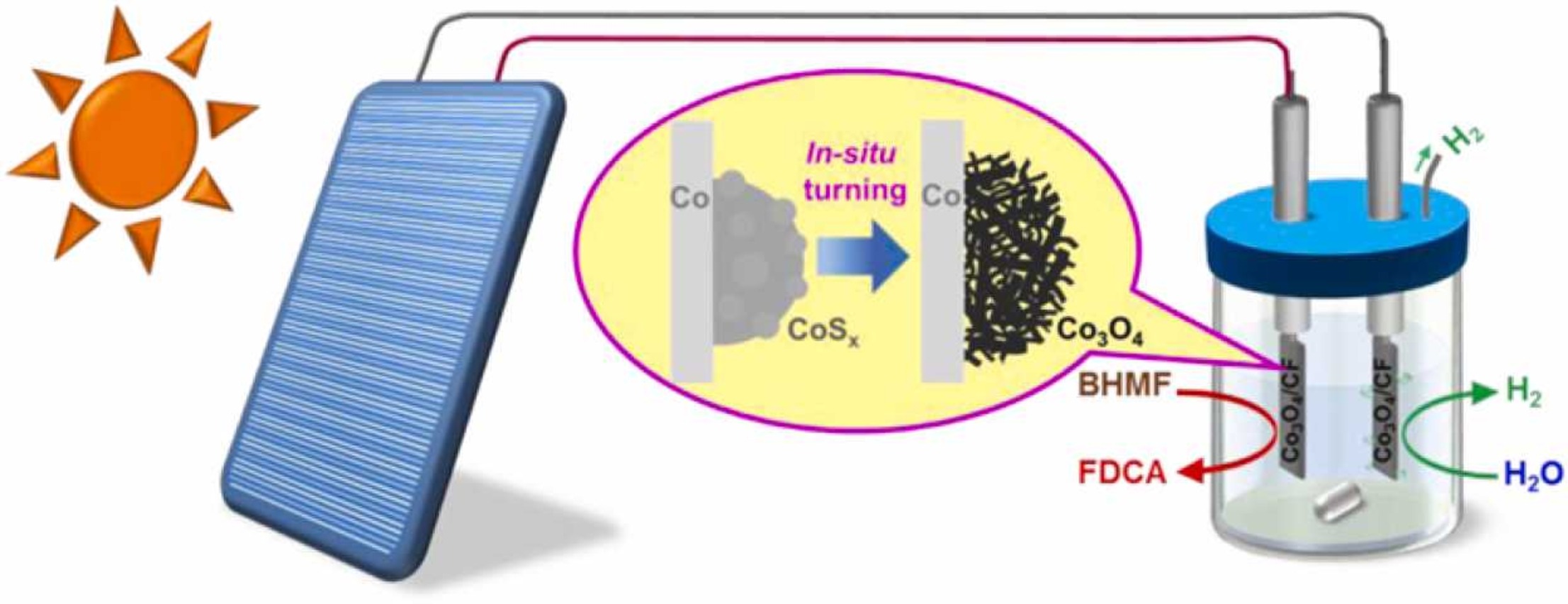
Prof. ZHANG Jian's team at the Ningbo Institute of Materials Technology and Engineering (NIMTE) of the Chinese Academy of Sciences (CAS) has developed a highly effective cobaltosic
Biomass is one of the most abundant renewable resources on earth.
As the ultimate source of most energy on earth, solar energy can shorten the energy utilization path and improve the sustainability of the reaction process dramatically when introduced into catalytic reactions.
By virtue of sulfuration and in-situ electrochemical oxidation, researchers at NIMTE developed a hydrangea-like Co3O4 on cobalt foam as an efficient electrocatalyst.
A commercial solar cell was used to provide a roughly stable voltage of 1.60±0.02 V by adjusting brightness.
Compared with the traditional thermally driven method to convert HMF to FDCA, which usually requires high temperature, high pressure, harsh reaction conditions, and even expensive precious metal catalysts, the photovoltaic electrocatalytic technology proposed in this study based on earth-abundant biomass shows many advantages, such as mild reaction conditions, low production cost, high energy efficiency and superior operating safety.
In addition, the researchers have applied for eight invention patents on related technologies and one patent has been issued.
This work financially supported by the National Natural Science Foundation of China, the Zhejiang Provincial Natural Science Foundation of China, the Key Research and Development Program of Zhejiang Province, etc.

The photovoltaic electrocatalysis for biomass upgrading and hydrogen generation. (Image by NIMTE)

86-10-68597521 (day)
86-10-68597289 (night)

52 Sanlihe Rd., Xicheng District,
Beijing, China (100864)

